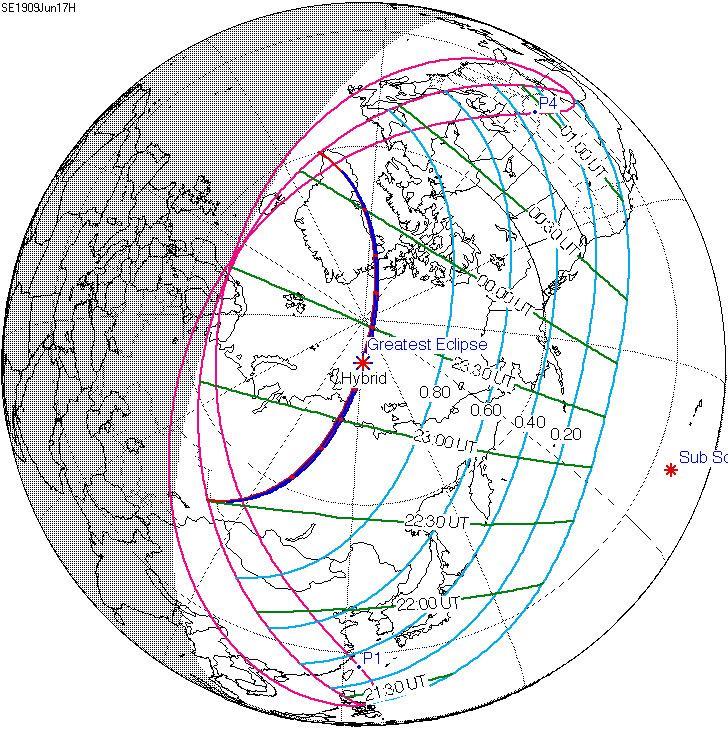Nature Hybrid Magnitude 1.0065 Max. width of band 51 km (32 mi) | Gamma 0.8957 Duration 24 sec (0 m 24 s) Greatest eclipse 23:18:38 | |
 | ||
Solar eclipse of june 17 1909
A total solar eclipse occurred on June 17, 1909. A solar eclipse occurs when the Moon passes between Earth and the Sun, thereby totally or partly obscuring the image of the Sun for a viewer on Earth. A total solar eclipse occurs when the Moon's apparent diameter is larger than the Sun's, blocking all direct sunlight, turning day into darkness. Totality occurs in a narrow path across Earth's surface, with the partial solar eclipse visible over a surrounding region thousands of kilometres wide. This event was a hybrid, starting and ending as an annular eclipse.
Contents
The path of totality crossed the Arctic ocean, Canada, Greenland, central Russia, and central Asia.
Solar eclipses 1906-1909
Each member in a semester series of solar eclipses repeats approximately every 177 days and 4 hours (a semester) at alternating nodes of the Moon's orbit.
